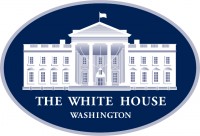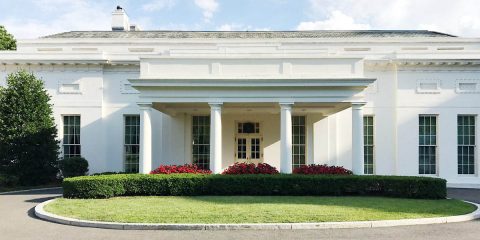New Department of Energy Issue Brief Details How Solar Investments Create Good-Paying Jobs and Reduce Consumer Costs for Energy
 Washington, D.C. – Today, the United States Department of Energy (DOE) released a new issue brief that details a bright future for solar power, good jobs, and affordable energy in the United States.
Washington, D.C. – Today, the United States Department of Energy (DOE) released a new issue brief that details a bright future for solar power, good jobs, and affordable energy in the United States.
President Joe Biden’s proposed investments in the Bipartisan Infrastructure Deal and Build Back Better Agenda will invest in the infrastructure, manufacturing, innovation, and incentives for solar energy that we need to grow good-paying, union jobs at home, make solar energy affordable for all American families and accelerate the deployment of net-zero energy across the country.
These critical investments will unlock the full potential of solar and help fight the climate crisis.
To spotlight how President Joe Biden’s plans will grow solar jobs and lower costs for working families, Biden-Harris Administration officials are traveling across the country to meet with industry, academia, homeowners, and stakeholders to discuss the benefits of solar.
Today, National Climate Advisor Gina McCarthy will meet with local climate leaders and experts at a California university to see how the school is leveraging clean energy, while Labor Secretary Marty Walsh will tour First Solar’s solar panel manufacturing facility in Lake Township, Ohio, and meeting with workers.
First Solar already supports 1,600 jobs in Ohio, and this new factory expansion will create about 500 new jobs. Yesterday, Energy Secretary Jennifer Granholm was in Alaska touring renewable energy labs and discussing game-changing clean energy technologies with local businesses.
The DOE issue brief – Investing in the Clean Energy Future: Solar Energy Research, Deployment, and Workforce Priorities – details the immense growth opportunities that exist in the solar energy industry for workers and families, and how investments like those proposed by President Joe Biden can supercharge the benefits of these opportunities. In particular, the issue brief explains:
- Investment in Solar Deployment Supports the U.S. Clean Energy Revolution. Solar will play an important role in reaching President Biden’s 2035 clean electricity goal – alongside other sources of carbon-pollution free electricity, including onshore and offshore wind, existing power plants retrofitted with carbon capture or green hydrogen, geothermal, hydropower, and nuclear. Solar is already the fastest-growing source of new electricity generation in the nation – growing nearly 4,000 percent in just over a decade, from about 2.5 gigawatts (GWdc) of solar capacity in 2010 to over 100 GWdc today. The pipeline of new solar projects in 2021 is on pace to hit record highs. To reach a largely decarbonized electricity sector by 2035, solar deployment would need to accelerate to three to four times faster than the current rate by 2030. Large-scale decarbonization of the electricity sector could move solar from 3 percent of generation today to over 40 percent by 2035.Realizing this potential for solar generation requires historic investments to accelerate deployment of residential, commercial, and utility-scale solar systems, including in disadvantaged and low-income communities. The proposed clean energy investments in the Bipartisan Infrastructure Deal and the Build Back Better Agenda will serve as this catalyst for jobs and economic opportunity. This includes the extension of $300 billion in tax cuts for clean electricity, including solar, making it cheaper to build, funding for new transmission and energy storage infrastructure to help deliver clean, reliable power to homes and businesses. President Biden also proposed a new Clean Energy Accelerator to leverage private capital for community solar projects, particularly in low-income and disadvantaged communities. These investments, along with the proposed Energy Efficiency and Clean Electricity Standard, can help achieve the President’s goal of 100 percent carbon pollution-fee power by 2035.
- Solar Innovation Can Lower Costs for Consumers and Communities. Thanks in part to DOE investments, solar costs have declined 70 percent to 80 percent since 2010 – lowering the price of a typical 6 kW residential system by almost $30,000. While solar photovoltaic (PV) is already the least expensive electricity option in dozens of states, it is important to bring this low-cost, zero-carbon electricity to more parts of the country to save American families money. The Biden Administration is committed to continually investing in solar innovation and lowering the cost of energy for families and communities across the country. This is why the Solar Energy Technology Office at DOE set a new 2030 goal of cutting the cost of solar (PV) to $0.02 and $0.05 per kilowatt-hour without subsidies, for utility and residential scales, respectively. This would deliver nearly $14,000 in savings for a typical home system.DOE is also celebrating the Summer of Solar 2021 to promote a new, free, web-based tool – the Solar Automated Permit Processing (SolarAPP+) – that helps local governments speed up the review and approval of permits for residential solar and solar plus storage systems. Faster permitting times will attract businesses to work in jurisdictions that use it. After implementing a similar tool to fast-track permits in San Jose, CA, residential installations increased by 600 percent.Build Back Better investments proposed by President Biden can help DOE achieve these solar cost reductions. Investments in clean energy R&D, supply chains of critical materials, and tax cuts for new and retooled factories for advanced energy manufacturing will help lower costs across the solar lifecycle. Extending the tax cuts for both utility and residential renewable energy project can help lower the upfront costs of new solar and accelerate deployment so that everyone can benefit from the economies of scale. Lower solar costs overall can put downward pressure on utility energy costs for ratepayers, and make solar more affordable for more families while reducing the greenhouse gas (GHG) emissions of their energy use.
- Solar Energy is a Job Creator. In 2020, there were over 300,000 people employed in the American solar industry – 230,000 of whom worked in solar for a majority of their time. Employment in the solar industry has been one of the fastest growing sectors over the past decade – increasing by 150 percent between 2010 and 2020. These workers are employed by over 10,000 solar businesses across all 50 states, the District of Columbia, and Puerto Rico – many of them small businesses. While clean energy jobs broadly were hit by the economic shutdown due to the COVID19 pandemic, they have bounced back substantially – adding back over 300,000 jobs this past year – and recovering at a rate faster than most other sectors of the economy.A pathway to a largely decarbonized electricity sector by 2035 can add millions of new jobs across clean energy technologies, including potentially 500,000–1,500,000 people working in solar by 2035. To match this demand with supply, investments are needed to expand the talent pipeline by increasing access to training opportunities across the entirety of workforce development stakeholders, such as labor unions, community colleges, non-profits and other training providers. This could include apprenticeship-based career pathways that contain solar work as part of a broad-based career path. The President’s agenda will ensure that these investments produce good-quality jobs with strong labor standards, including prevailing wages and the free and fair choice to join a union and bargain collectively.
The solar industry has its roots in America. The United States pioneered the manufacturing and scale-up of solar PV technologies, and American R&D has helped lower manufacturing costs, increase efficiency and performance, and improve reliability of solar technologies.
As previously announced, DOE is pursuing new policy to ensure that all innovations that are developed with taxpayer dollars through DOE’s Science and Energy Programs require awardees to substantially manufacture those products in the United States, creating good-paying domestic jobs.
This change will cover more than $8 billion in clean energy and climate innovation funding requested in the President’s Budget for Fiscal Year 2022, as well as future fiscal year spending. DOE will implement these actions through a Determination of Exceptional Circumstances under the Bayh-Dole Act.
This DOE issue brief underscores the immense opportunity that exists within the solar industry and how key investments, like those proposed in the Build Back Better Agenda, can seize that opportunity. Doing so will create thousands of good-paying, union jobs at home, expand manufacturing, make solar affordable for all communities, and lower monthly utility bills – all while positioning the United States as a leader once again in solar energy and putting us on track to meet President Biden’s climate goals.
Read the full issue brief here




